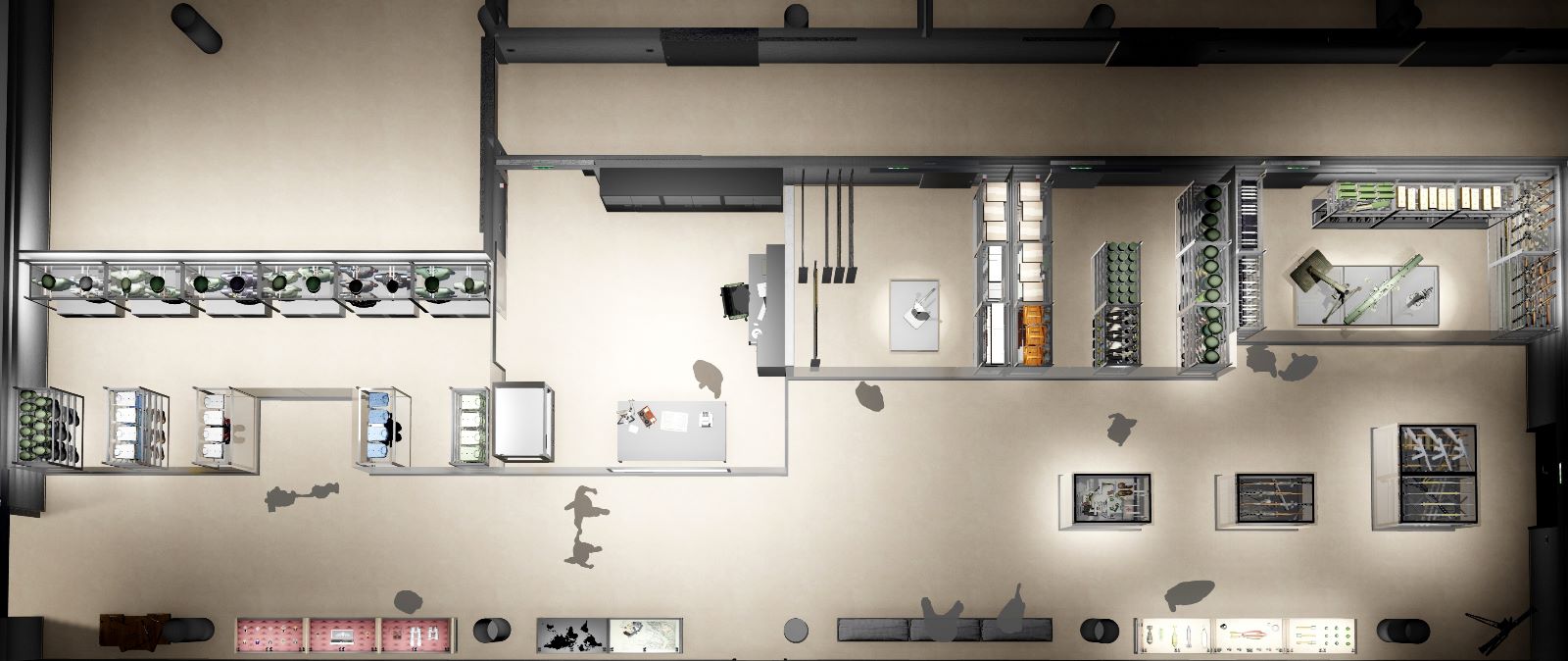Názov projektu: Open Depository
Partner projektu: The Narvik War and Peace Centre, Norway
Cieľ projektu: Creating an open collection storage that will enable to change the way of making collection items accessible to museum visitors.
Project description
The “Open Depository” project is unique in its idea, construction and technological design. In fact, there are not many similar projects in Europe where museums open their collection storages to the general public and it is hardly the case of museums in the Slovak Republic.
Most museums have many more collection items in their storages than they can actually present to visitors in their exhibitions. Similarly, the storage conditions of collection objects are often not ideal. The Museum of the Slovak National Uprising is no exception. Its exhibitions only make a tiny part of its collections accessible to the public. The collection fund of the Museum of the SNU consists of more than 16,000 items of incalculable value. The majority of these items is stored in the collection storage to which the public does not have access. The collection items have been professionally treated and stored within the limited possibilities according to the structure of particular collection in several storage spaces. These storage spaces were created gradually in several stages and contain mainly office cupboards, storage racks and wooden racks for rifles. For a long time, this way of storage of collection items has not covered the real needs of protection and care. A potential damage of an item could lead to the loss of its testimonial value.
Among the present-day issues addressed by modern museology is the dilemma of protection versus accessibility of collections. The Museum of the SNU has long been trying to bring new perspectives into the concept of caring for museum collections, as well as the use of modern technologies in their presentation to the public.
The optimal solution appears to be the construction of the Open Depository (open collection storage), which will free up space in the current protective storage and thus significantly improve the care for the museum collections. The collection objects in the Open Depository will be equipped with a 2D code. When retrieved via the mobile application, this code will give the visitor access to even more interesting information about the object and tell its story.
In addition to the creation of the Open Depository, the project also includes education through collection objects. Over the duration of the project, a complex place will be created that will combine the museum’s basic needs in preserving and managing the museum’s collections and the needs of the general public to learn more about its history. In general, an experiential method of education generates a greater interest in history and allows to concentrate on specific areas of national and world history of the 20th century. Educators in this project focus also on the forms of modern extremism, racism and social intolerance in the context of human rights and freedoms. The target group of the education are pupils of primary, secondary and high schools, and also teachers – not only from Banská Bystrica.
An equally important part of the project is the cooperation with the Norwegian partner museum – The Narvik War and Peace Centre. Professional conferences, museology seminars and workshops on active and passive preservation of collections and education through museum objects will be organised throughout the duration of the project as well. Their outputs will be presented in the form of electronic proceedings published in two languages (Slovak and English). Moreover, each of the partners will be able to exchange experiences through exchange stays in Slovakia and Norway and the cooperation will continue even after the end of the project. Both partners will summarise the project results on websites, publish expert blogs on collection management and conservation and create content for the general public.
The project “Open Depository” benefits from a € 850 000,- grant from Iceland, Liechtenstein and Norway through the EEA Grants. The project has been co-financed from the State Budget of the Slovak Republic in the amount of 150 000,- €. The aim of the project is to create suitable conditions for storage, presentation and research of the collection items.
The EEA Grants represent the contribution of Iceland, Liechtenstein and Norway towards a green, competitive and inclusive Europe.
There are two overall objectives: reduction of economic and social disparities in Europe, and to strengthen bilateral relations between the donor countries and 15 EU countries in Central and Southern Europe and the Baltics.
The three donor countries cooperate closely with the EU through the Agreement on the European Economic Area (EEA). The donors have provided €3.3 billion through consecutive grant schemes between 1994 and 2014. For the period 2014-2021, the EEA Grants amount to €1.55 billion. The priorities for this period are:
#1 Innovation, Research, Education and Competitiveness
#2 Social Inclusion, Youth Employment and Poverty Reduction
#3 Environment, Energy, Climate Change and Low Carbon Economy
#4 Culture, Civil Society, Good Governance and Fundamental Rights
#5 Justice and Home Affairs
The EEA Grants are jointly financed by Iceland, Liechtenstein and Norway, whose contributions are based on their GDP.
Eligibility for the Grants mirror the criteria set for the EU Cohesion Fund aimed at member countries where the Gross National Income (GNI) per inhabitant is less than 90% of the EU average.
All projects are co-financed by the State Budget of the Slovak Republic in the amount of 15%.
If you want to know more about programmes and projects financed by the EEA Grants in Slovakia, visit
